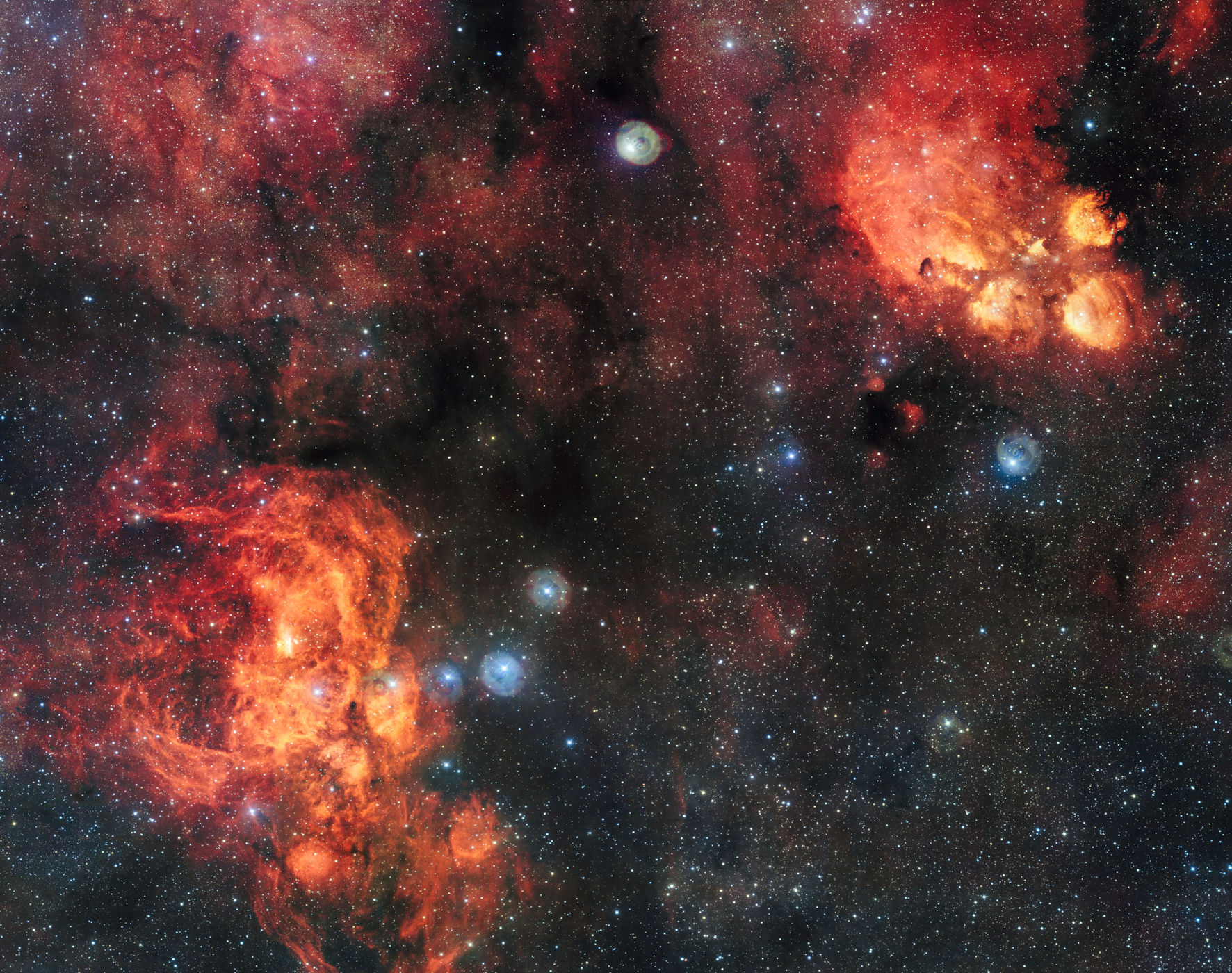
Stellar nebula are a little like clouds: where you may see the shape of a bunny, I might see a dragon; your sailing ship might be my bumble bee. So never mind if you don’t see a cat (top right) shaking hands with a lobster (bottom left) in this stunning image just released by the European Southern Observatory’s (ESO) Very Large Survey Telescope in the Chilean desert. Pay attention instead to the sheer dazzle of the image and the numbers behind it.
The Cat’s Paw Nebula (properly known as NGC 6334) is located 5,500 light years from Earth, or about 33 quadrillion miles (53 quadrillion km) away, and the Lobster Nebula (known as NGC 6357) is 8,000 light years distant, or 48 quadrillion miles (77 quadrillion km). The picture was captured with a 256 megapixel camera and the overall image that resulted contains more than 2 billion pixels.
It was British astronomer John Herschel who first saw the two nebula, appearing as faint smudges through the eyepiece of his comparatively primitive telescope, in 1837. Over the many decades that followed, the images became much sharper, and the shapes of the nebulae presented themselves. The circular formations in NGC 6334—resembling the toe pads of a cat’s claw—are responsible for its name. As for the Lobster Nebula, well, that’s all in the eye of the viewer.
Both formations are nurseries for hot young stars which emit powerful ultraviolet energy. Those emissions, in turn, ionize surrounding hydrogen gas, and that helps produce the brilliant glow. There’s more to the images than eye candy, of course, and ESO astronomers hope to use the pictures to learn more about the birth throes of all stars. The cat and the lobster themselves, meantime, will simply continue their ancient sky show.
More Must-Reads From TIME
- The 100 Most Influential People of 2024
- The Revolution of Yulia Navalnaya
- 6 Compliments That Land Every Time
- What's the Deal With the Bitcoin Halving?
- If You're Dating Right Now , You're Brave: Column
- The AI That Could Heal a Divided Internet
- Fallout Is a Brilliant Model for the Future of Video Game Adaptations
- Want Weekly Recs on What to Watch, Read, and More? Sign Up for Worth Your Time
Write to Jeffrey Kluger at jeffrey.kluger@time.com